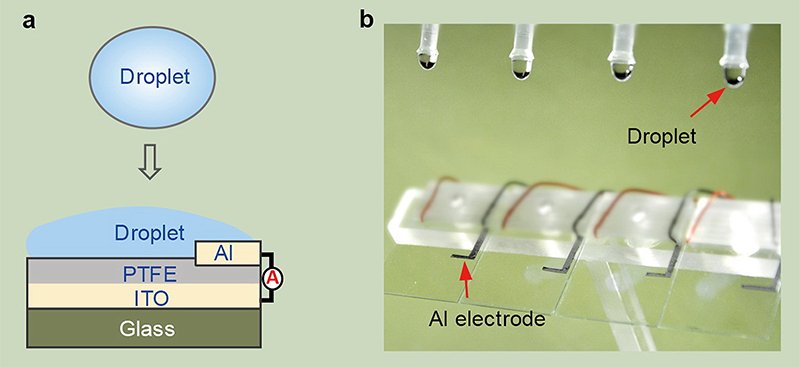
Generate electricity from rain
Tapping into the water cycle and generating electricity from rainy days could be one way to grow our renewable energy use.
Until now, scientists have been unable to get water droplets to produce a significant amount of power - but we may finally have a breakthrough.
New research has found a method that could generate enough power from a single droplet of rain to light up 100 LED bulbs. That's a big jump forward in efficiency, in the region of several thousand times.
The research shows that a drop of 100 microliters of water released from a height of 15 centimeters can generate a voltage of over 140V, and the power generated can light up 100 small LED lights.
That sounds like a surprising amount of voltage, but the engineers used some ingenious tricks to make it happen.
Scientists have been looking into this type of power production for years, but the physics of converting the energy of raindrops into electricity are much harder to do than harvesting the energy from a rising tide or a flowing stream.
One of the improvements the team built into their droplet-based electricity generator was the use of a (poly tetra fluoro ethylene) or PTFE film, which is able to accumulate a surface charge as it's continuously hit by water droplets, until it gradually reaches saturation.
The team found that as water droplets hit the surface and spread out, the drops act as a 'bridge' that connects two electrodes: an Aluminum electrode and an Indium tin oxide electrode (with the PTFE on top).
The droplet bridge in turn creates a closed-loop surface so that all of the collected energy can be released – droplets act as resistors, and the surface coating acts as a capacitor.
This approach could eventually be applied anywhere that water hits a solid surface, the hull of a boat, the inside of a water bottle, or the top of an umbrella.
The significance of this technology is the much enhanced electric power per falling rain droplet, which makes the device much more efficient to convert energy from a falling droplet to electricity.
For more information about PTFE refer to the following guide: https://omnexus.specialchem.com/selection-guide/polytetrafluoroethylene-ptfe-fluoropolymer
 English
English Arabic
Arabic


